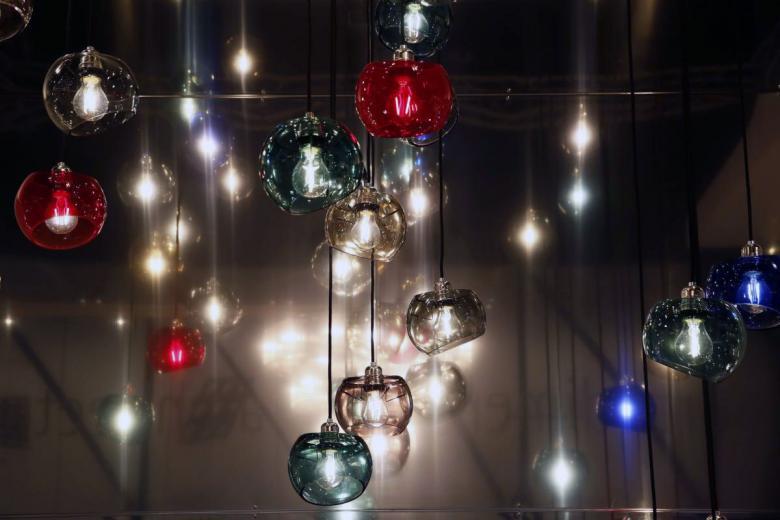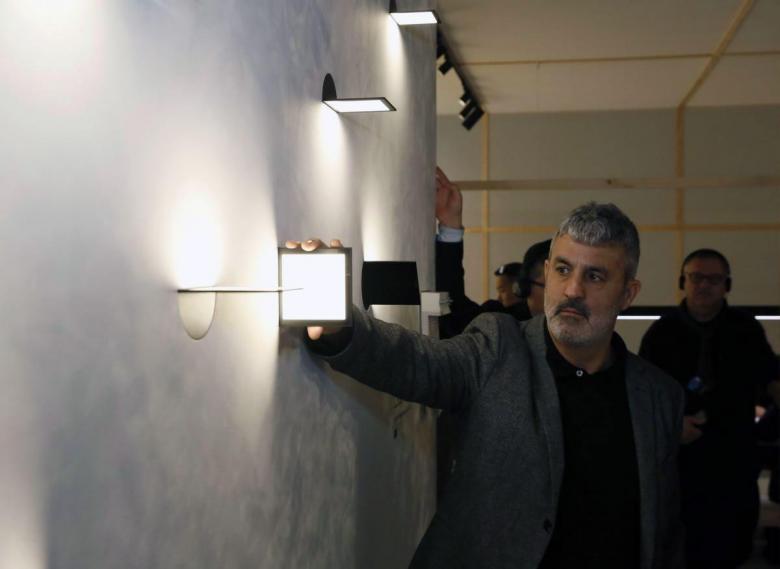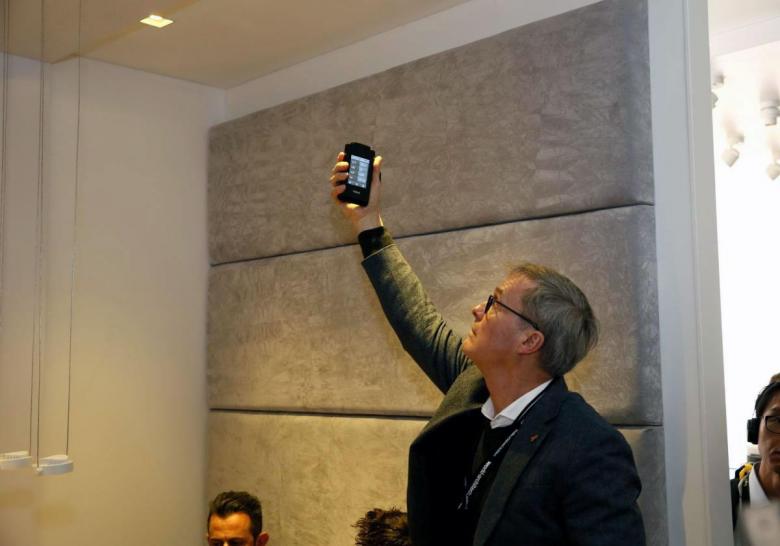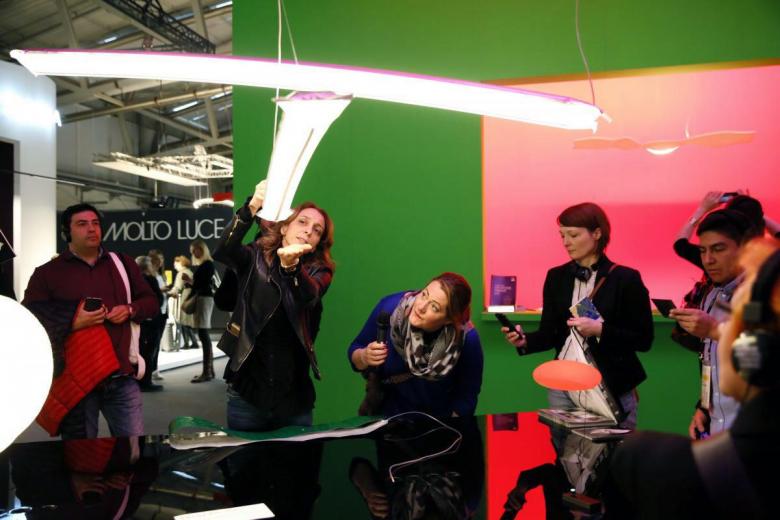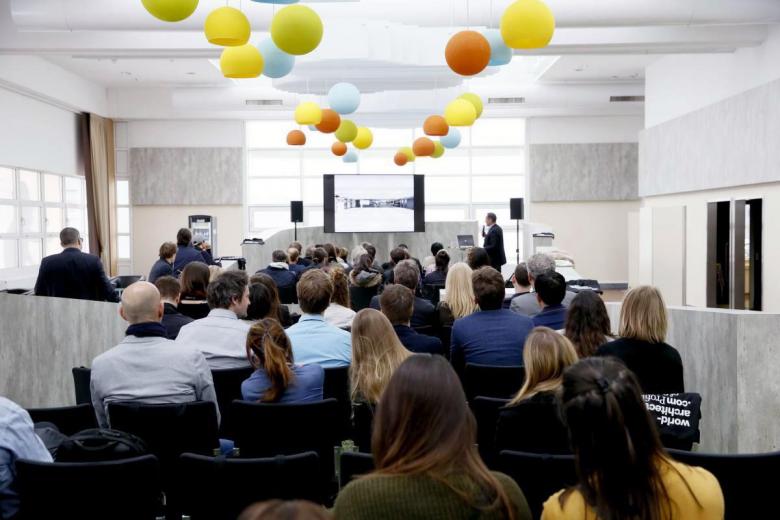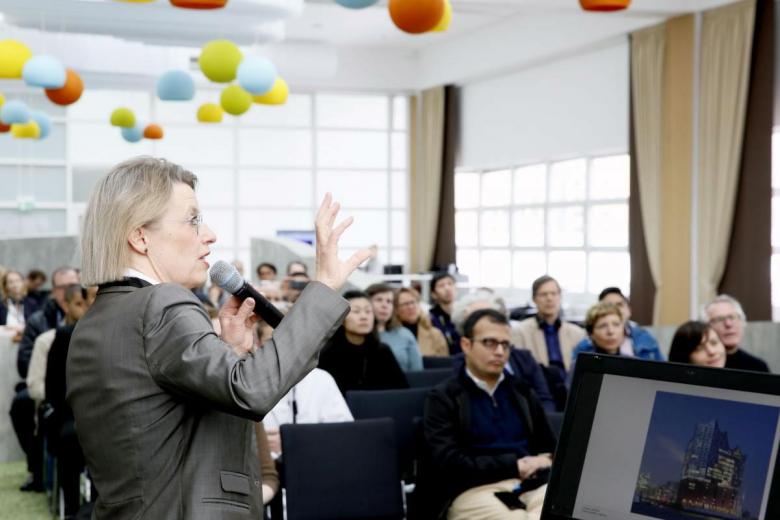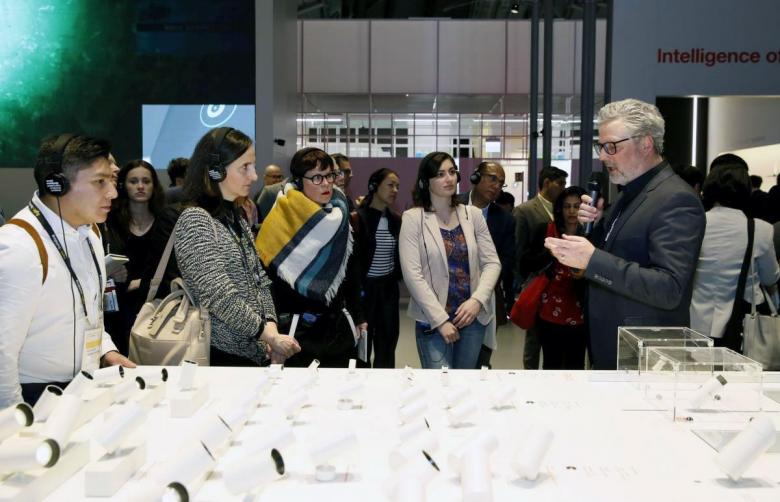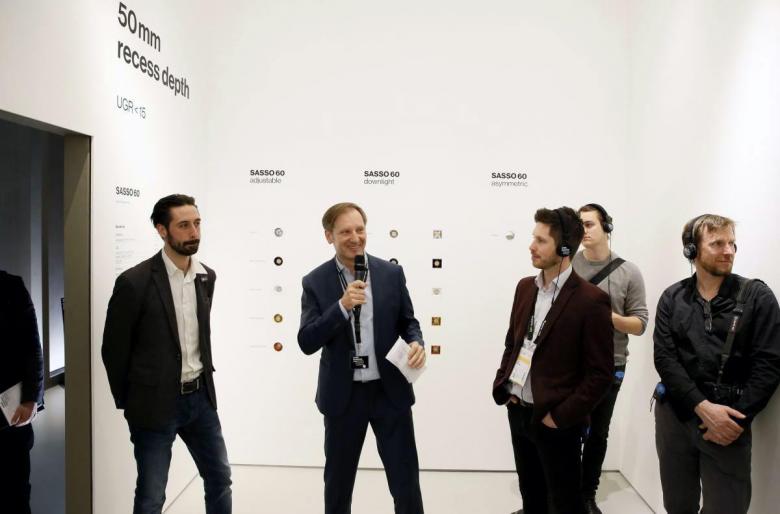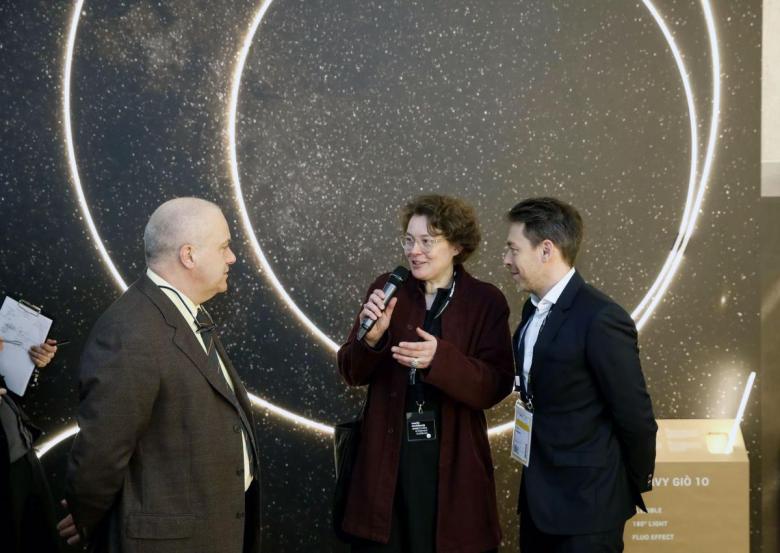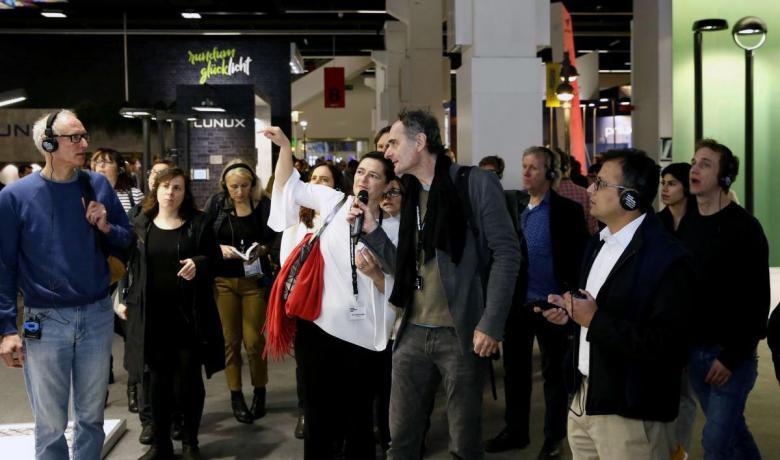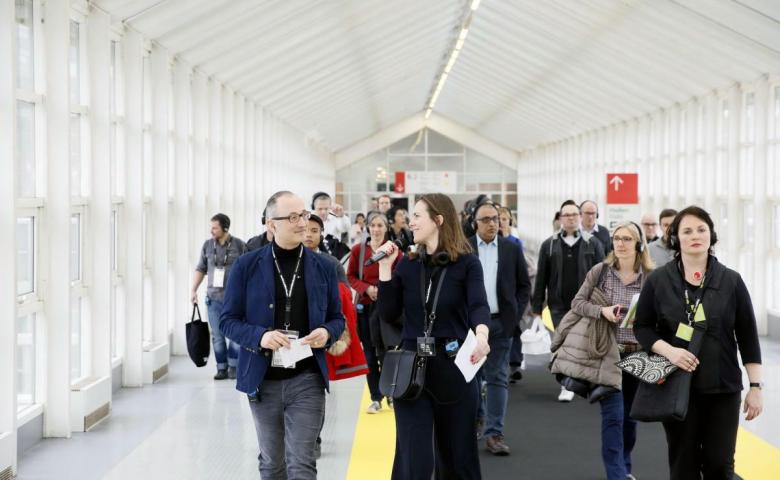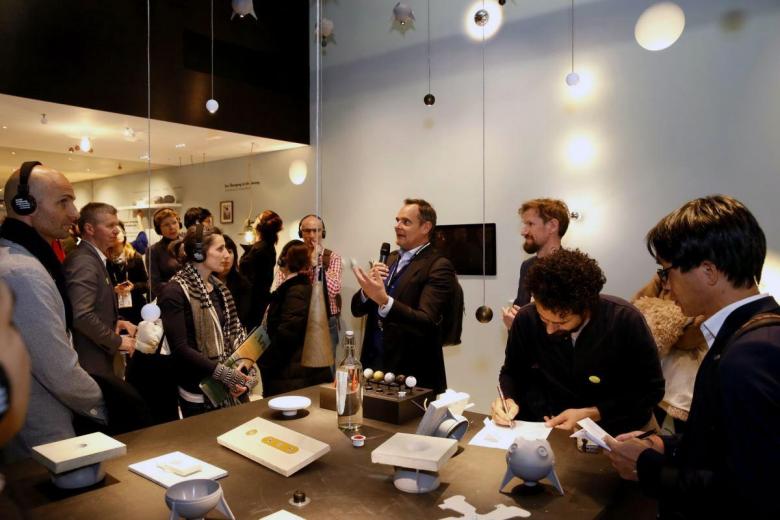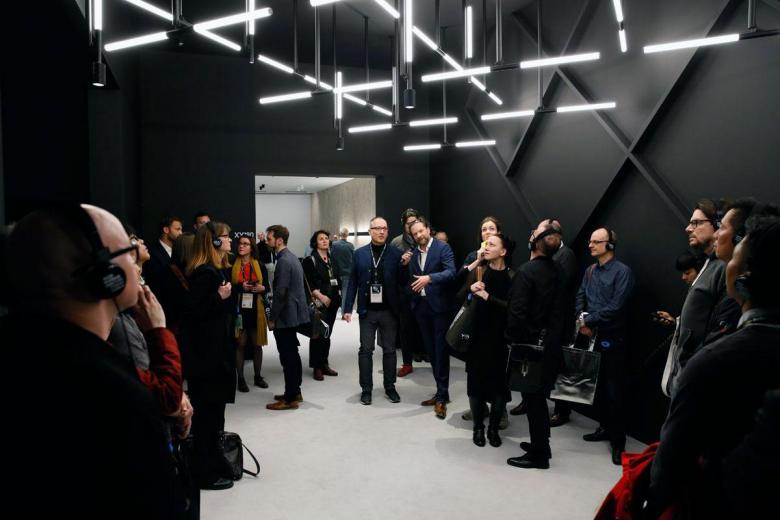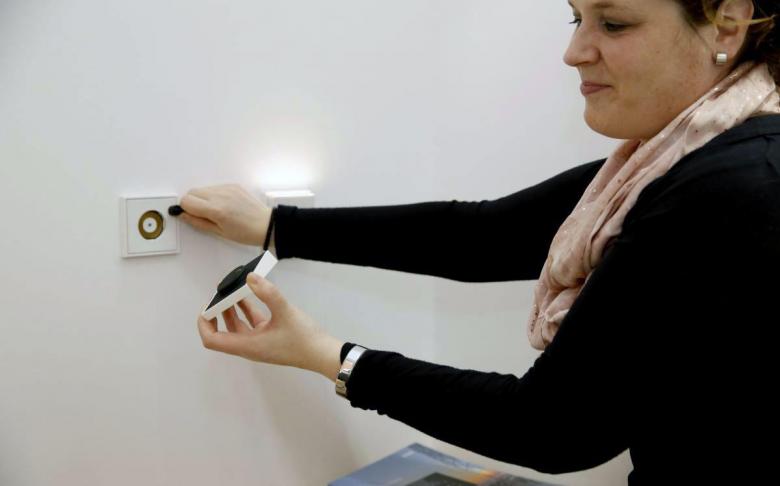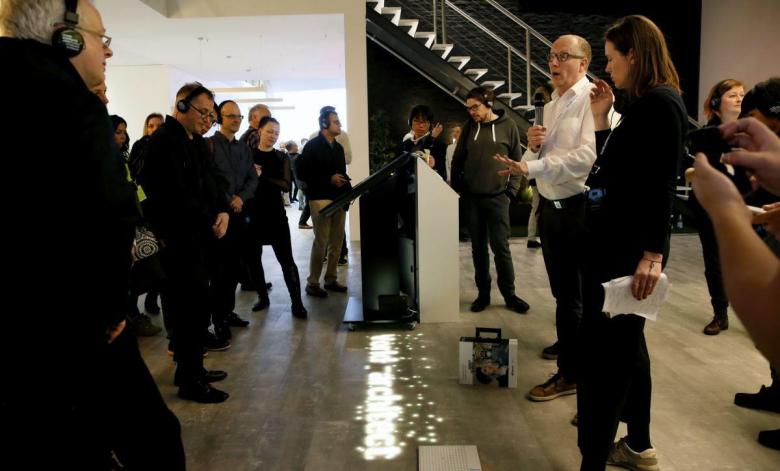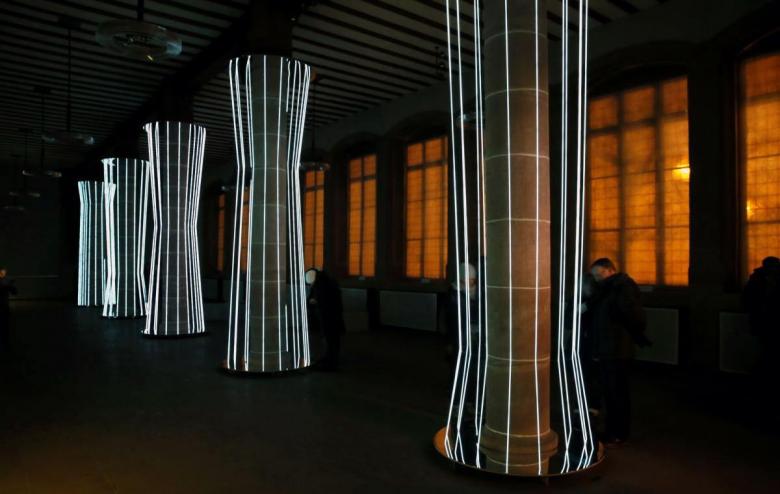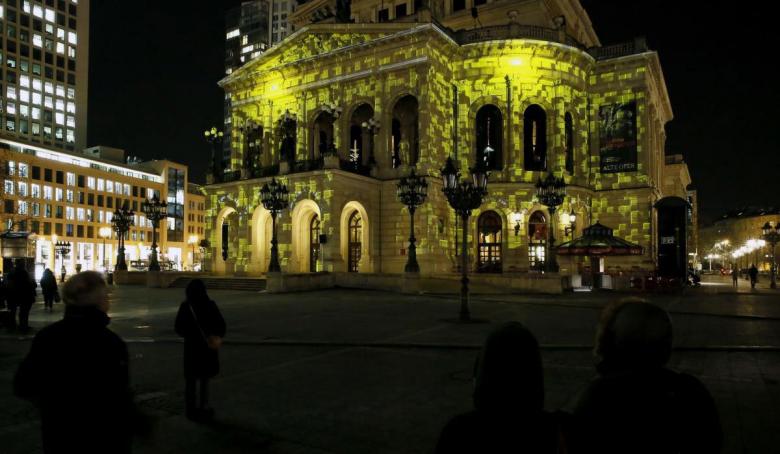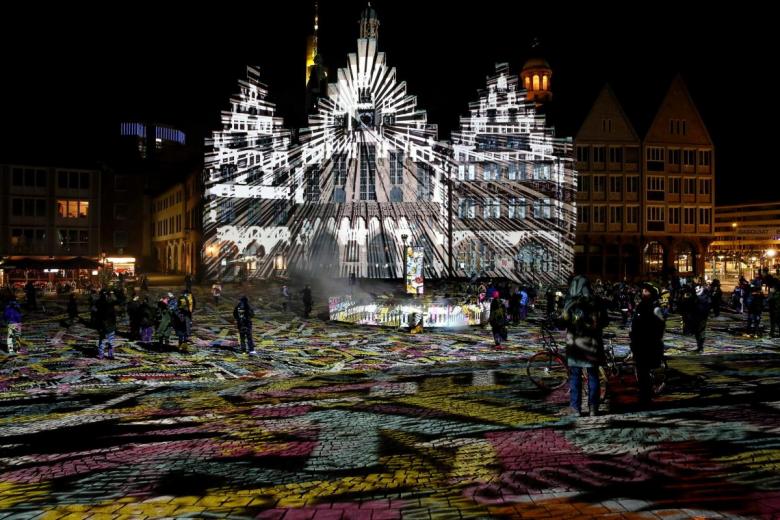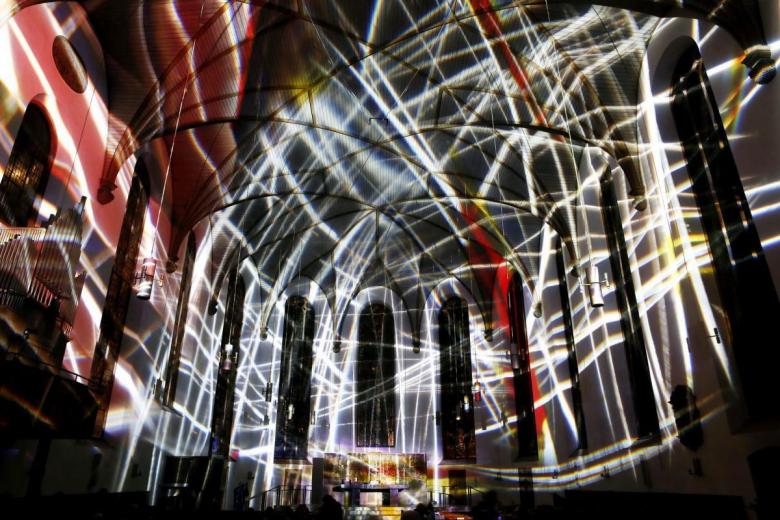12. April 2018
This year's Light + Building trade fair took place from 18 to 23 March 2018 under the motto of "Networked - Safe - Convenient". (Photo: Markus Bachmann / World-Architects)
For six days, the gates in Frankfurt am Main were once again open for players in the fields of lighting, electrical engineering as well as home and building automation. It was six fabulous days that caused satisfaction among almost all visitors and exhibitors. This is not least due to digital change, which the branches are obviously enjoying. Our trade fair review.
Light + Building – The world’s leading trade fair for lighting and building services technology (Frankfurt am Main, DE) | 18 to 23 March 2018
Two years ago, on the occasion of the Light + Building 2016 trade fair, we wrote about a "true festival for lighting and technology freaks" that makes the engineer's and electrician's heart beat faster. The 2018 edition of Light + Building was - which seemed hardly possible – was actually even more successful. More exhibitors, more visitors and greater foreign participation, or, as Wolfgang Marzin, Chairman of the Board of Messe Frankfurt, sums up: "A firework of innovations was on display at Light + Building over the past six days. All participants - exhibitors, partners and visitors - were enthusiastic. The positive mood could be felt in all halls. The industry is still on the upswing." The ratings were correspondingly good: The overall assessment for Light + Building 2018 was (according to Messe Frankfurt) reached a satisfaction level of over 80 percent, and the visitors' satisfaction levels even reached 97 percent. After the fair, 90 percent of the exhibitors rated the economic prospects as positive, among German exhibitors it was as high as 94 percent.
And yet: numbers can be smoke and mirrors. Therefore, it's worth taking a closer look: The most important and omnipresent topic was digitalization. Almost all manufacturers have meanwhile adapted to the new technologies and present their ideas for a smart world. The biggest driver in the lighting industry is and remains LEDs, which have since become more than mature. LEDs can be used to produce any kind of light, at least in terms of brightness, shape and color (keyword: Human Centric Lighting). LEDs are also powerful enough to equip high-power spotlights, such as those from ERCO with their customary attractive design. And, LEDs are flexible and versatile, as shown, for example, by the numerous creative and inspiring designs of Ingo Maurer. So, the question is: What else can actually be new in the field of light and lighting?
Today, artificial light has many expressions that are worth exploring for lighting designers. In the picture: tour guide Rafael Gallego (AUREOLIGHTING, Madrid) at Fluvia. (Photo: Markus Bachmann / World-Architects)
Exactly, it's the quality. Asked more precisely: what kind of light does the luminaire actually radiate? This year, there were still major differences to be discovered when it came to light quality. What's more, some manufacturers (not mentioned here) obviously couldn't do much with this term and answered by listing lumen values or the like. Others already provide good quality light yet wonder about the question. The thing is actually quite simple: the reference factor for light quality is sunlight, in which an apple always looks as if you want to bite into it. This is not always the case with LEDs. Two years ago, LED manufacturer SORAA (founded by Suji Nakamura, who received the Nobel Prize for the invention of the blue LED in 2014) was a pioneer in terms of light quality, whose LEDs were able to convince with impressive color reproduction. This year, more have joined in, showing what was already in the pipeline: the LED is so advanced that it can also be customized in terms of lighting quality. At Xicato (USA), for example, a direct and initially covert comparison was made between halogen and LED, where almost no difference could be seen any more. The SunLike brand (Seoul Semiconductor, South Korea) produces an LED whose light spectrum is almost equal to that of the sun, with the high blue component in particular being normalized. It also became clear that the CRI measurement method, which uses 8 or 14 reference colors, is probably already outdated in the age of LEDs. Alternative measurement methods such as TCLI (Television Lighting Consistency Index) with 24 color points or the TM-30-15 of the North American IES (Illuminating Engineering Society) with up to 99 color points are promising. In any case, the industry will have to adapt to these issues in the future.
Flickering or absence of flickering is also an important part of light quality, especially for ballasts. Manufacturer EldoLED (NL), for example, impressively demonstrated this on a kind of roulette table with which it was possible to show how inconspicuously some LEDs do flicker and how harmful this can be for the eyes. By the way, you can do a similar test yourself and simply hold a fan or a camera in front of the light source. Anyone who recognizes flickering through these "filters" is not working with a flicker-free light source.
Michael F. Rohde likes to arrive with devices and feels out the manufacturers, here at SORAA from the UK. (Photo: Markus Bachmann / World-Architects)
Not to mention the technology: What was offered in terms of design? The short answer would be: a lot. Much that was to be expected, because LEDs offer designers endless possibilities. It was striking, however, that primarily the smaller think tanks set the tone this time. Georg Bechter (AT), for example, with his small and fine, built-in, almost invisible lights, or Brokis (CZ) with beautiful, expansive glass luminaires, or Vibia (ES), which used poetic luminaries (e.g. by designer Stefan Diez) to reflect the light back onto its essence. We have found a smart solution at Sattler (DE), whose honeycomb-shaped Favo LED system allows almost any lighting scenario with digital control. XAL (with one of the most beautiful trade fair stands in understated colors and materials, designed as a mini-city) presented not only beautifully designed acoustic luminaires but also a modular system that allows lighting scenarios to be configured online. Light and acoustics as a combination were also on display at Nimbus; the company managed to combine its two divisions of Nimbus Light and Rosso in one product at this year's trade fair.
What about OLED? Of course, it was also to be seen, even though only rarely. At Luflex, for example, where LG's OLEDs were exhibited. After all, the panels now measure up to 30 x 30 cm and can be bent to create beautiful, floral-looking luminaires. On the other hand, however, it must also be said that the effects of OLEDs can now also be very well achieved with normal LEDs - but simpler, cheaper and more durable. For this reason, OLEDs will probably remain a niche product for special applications in the future.
Ingo Maurer, who presented his inflatable lamp "Blow Me Up" this year, is always up for a bit of fun. In the picture: tour guide Birgit Walter (BMLD, Barcelona). (Photo: Markus Bachmann / World-Architects)
One of the top themes proclaimed by the trade fair company was "Security", to which a special area was dedicated in Hall 9.1. Additionally, the topic was addressed at the stands of many manufacturers. At Selux (DE), for example, we have found a street lighting module that not only illuminates streets, but also provides a WLAN network and can integrate cameras in a compact and unobtrusive way. In addition, all Bluetooth devices were located live at the exhibition stand, which made it possible to create a motion profile of the visitors. This also shows, however, that despite all digitalization, the question of who handles what data and how is becoming increasingly important. On the other hand, the security issue also offers quite concrete advantages. For example, when it comes to digital networking of fire protection devices with doors, windows, the ventilation system, and the fire brigade, as visitors could see at Hekatron (DE) and many other exhibitors.
Last but not least, digitalization has also been reflected in the smartification of the building, where the various well-known systems have evolved in time for this year's Light + Building. It was nice to see, for example, that open systems such as digitalstrom are now pre-configured by many renowned manufacturers and can even be integrated into KNX, which often greatly simplifies the creation of a smart grid. "Smart" are also co-operations of various manufacturers, such as Insta, Gira, Jung, and Brumberg, who have developed the Plug&Light light socket, which is expected to become the standard for LED lighting systems in the future.
A new feature of this year's World-Architects Guided Tours was the talks that preceded each of the trade fair tours on the Sunday. At the lectern: Thomas Mika (Reflexion, Zurich) during his lecture "Changes, Trends, Strategies". (Photo: Markus Bachmann / World-Architects)
Those who entrusted themselves to our World-Architects trade fair team were well advised. Daily guided tours through the halls and guided tours of the Luminale in the evenings have shown the high quality that Light + Building is capable of. By the way, the talks on Sunday were new this year. Internationally renowned lighting designers Ulrike Brandi from Hamburg and Thomas Mika from Zurich initially reported on their work before taking the participants on a tour of the exhibition halls. As we initially mentioned the great satisfaction of the trade fair company, it can be added here that the guided tours on the occasion of Light + Building and Luminale have also fully met all expectations.
6 trade fair days, 15 exciting guided tours with over 600 happy participants from 37 countries, 90 stand visits to 55 manufacturers from 13 countries, plus approximately 50 kilometers covered by foot per member of the trade fair team - that is the wonderful resume of our Light + Building 2018. Messe Frankfurt adds: 2,714 exhibitors (2016: 2,626) from 55 countries, 70 percent of them from abroad (2016: 67 percent), more than 220,000 trade visitors (2016: 216,610) from 177 countries, 52 percent of them from abroad (2016: 49 percent). The Luminale attracted approximately 240,000 visitors. This bodes well - we are looking forward to Light + Building 2020!
Ulrike Brandi (Ulrike Brandi Licht, Hamburg) opened this year's World-Architects' trade fair days with her lecture "Two Concert Halls and a Castle". (Photo: Markus Bachmann / World-Architects)
One of the trends at Light + Building in the luminaire sector was miniaturization. In the picture: tour guide Wilfried Kramb (a-g Licht, Bonn) at iGuzzini. (Photo: Markus Bachmann / World-Architects)
LED enables many module solutions, as could be seen at XAL, for example. In the picture: tour guide Daniel Tschudy (Bartenbach, Zurich). (Photo: Markus Bachmann / World-Architects)
The light circuit was already on display two years ago, this time even quite often. In the picture: tour guide Carls Wilkins (Lichtvision Design, Berlin) at Penta. (Photo: Markus Bachmann / World-Architects)
Always appearing as a pair, which is worthwhile: Iris and Michael Podgorschek (podpod design, Vienna). (Photo: Markus Bachmann / World-Architects)
The last Guided Tour is always the Highlights Tour, this time guided by editorial team member Thomas Geuder together with trade journalist Martina Metzner. (Photo: Markus Bachmann / World-Architects)
It was often the smaller manufacturers who brought a breath of fresh air into the exhibition halls. Here at Georg Bechter Licht with tour guide Thomas Mika (at the microphone, Georg Bechter behind him on the right). (Photo: Markus Bachmann / World-Architects)
Lightsabers, more accurately "XY180" lamps from OMA, were on display at Delta Light. (Photo: Markus Bachmann / World-Architects)
With "Plug&Light", the cooperation between Insta, Gira, Jung, and Brumberg has introduced a new connection standard for LED luminaires. (Photo: Markus Bachmann / World-Architects)
At Philips, who presented a floor lighting system, we were received very individually during our Highlights Tour. (Photo: Markus Bachmann / World-Architects)
Once again one of the highlights of this year' s Luminale: the Institute for City History in the Carmelite Monastery, here with LED ropes in the refectory. (Photo: Markus Bachmann / World-Architects)
Studio Karmachina projected the history of the Alte Oper onto its façade as a 10-minute video mapping show. (Photo: Markus Bachmann / World-Architects)
On the Römer, internationally renowned light artist Philipp Geist demonstrated the great images that can meanwhile be produced with digital technology and projection. (Photo: Markus Bachmann / World-Architects)
A beautiful rarity in times of digitalization: Victoria Coeln's projection in St. Catherine's Church was completely analog, produced only by scratches in backlit glass panes. (Photo: Markus Bachmann / World-Architects)
Guided Tours at the Light + Building and Luminale 2018 (World-Architects, Dauer: 4:15 min.)
